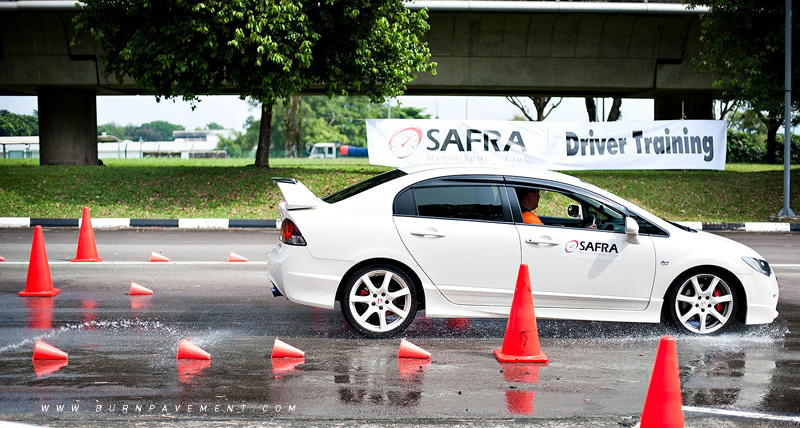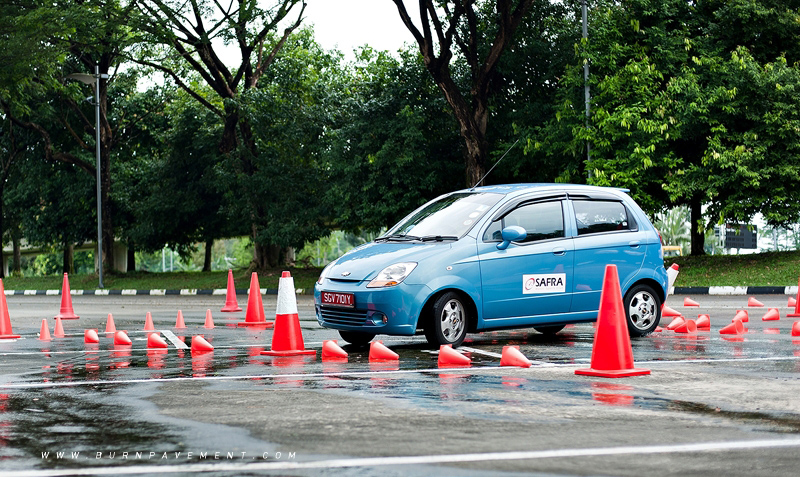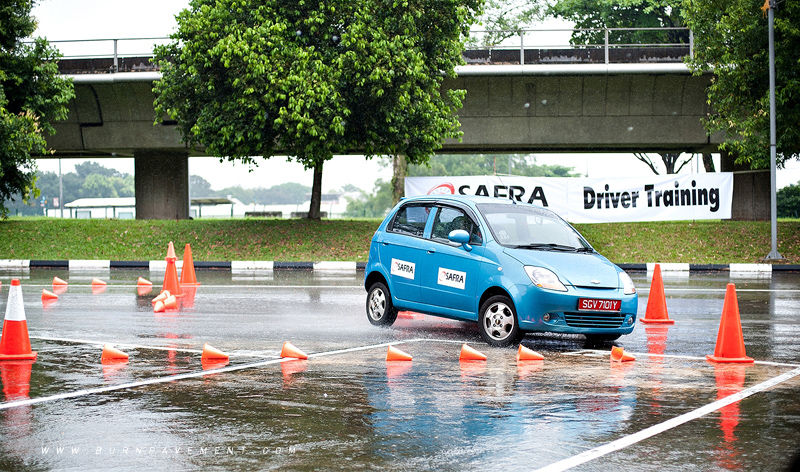A group of driving enthusiasts recently attended a Defensive Car Control Course organised by SMSC.
Photos: Low Fai Ming
Text: CPT (NS) Darion Lim, Chairman of SMSC
Organised by SMSC in conjunction with online car forum Team Chevrolet Singapore (TCS), the course included a three-hour theory session held at Safra Mount Faber on 18th September 2010 and an eight-hour practical session held on 25 September 2010 at the Singapore Turf Club's coach bay. The topics covered in the theory part of the Defensive Car Control Course (DCCC) included proper seating positions, steering, braking, under/oversteer recovery and other handling techniques. Participants were also given an overview on dealing with adverse driving conditions.

While the theory session was informative, it was the practical session at the Singapore Turf Club's coach bay that really provided the participants with the knowledge of how to react appropriately in critical situations. Through the practical lessons, the participants were given the opportunity to to experience how their cars would act when they engaged in emergency manoeuvres.

In total, 27 participants from TCS and SAFRA attended the DCCC. The demographics of the participants ranged between the ages of 20 to 54 years of age with driving experiences between one to more than 30 years. Equally as diverse were the cars that the participants drove, these cars included a nondescript Chevrolet Spark to high performance cars like the Mitsubishi Evolution X.

Aptly named the Defensive Car Control Course, the main objective of the course was to impart practical driving techniques and skills required to handle emergency road conditions and situations that might be encountered on a daily basis when driving. The course syllabus was designed to be as comprehensive as possible and caters for any drivers of varying levels of driving experiences.

For the practical session, there was ample practice, with participants performing close to 30 exercises. To maximise exposure, the participants ran through a variety of emergency road situations at different road speeds. They experienced emergency braking, emergency lane change, brake and avoid as well as skid recovery exercises. In addition, they also sampled some emergency evasive driving techniques such as the handbrake turn and the J-turn.






